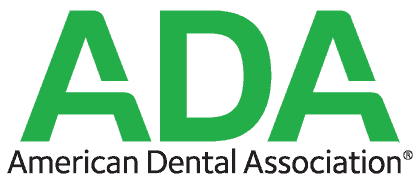Water Flosser or Dental Floss:
Which One Helps You More?
Which One Helps You More?
New braces can be exciting, but they can also cause you to rethink how you do certain things, from eating to brushing your teeth. Flossing becomes a whole new thing. You can’t just grab a piece of dental floss and shimmy it between your teeth anymore. There are wires in the way!
Luckily, tools can help you floss, but which is best? The two most popular are floss threaders, which allow you to use dental floss, and water flossers, which use a high-speed stream of water.
At Hentscher-Johnson Orthodontics, we have seen the benefits of both dental floss and water flossers, such as the popular brand Waterpik. There are differences between the two, and it’s important to know the differences to choose which is best for your oral health.

What’s a Water Flosser?
Let’s start with the basics. What do we mean by “water flosser” or “water picks,” and how does water flossing work?
A water flosser shoots a tiny stream of water between your teeth. Think of it as a teeny, tiny power washer. It’s also called an oral pulsating irrigator by, well, next to no one, so we’ll stick to “water flosser.”
The water flosser is designed to loosen and remove plaque and food particles between your teeth. While it does help remove plaque, you may be surprised to find that it doesn’t completely remove it.
Waterpik vs. Floss
Water flossers sound great, right? You can use them instead of dental floss, and you’ll be fine, right? Does a Waterpik replace flossing? Actually, no.
When it comes to water flossers vs. floss, the water picks for teeth are great, but you still need to use actual dental floss at least once a day.
Is a Waterpik better than flossing? As great as that little stream of water is, it doesn’t scrub the tooth like dental floss.
Think of it this way: If you have a bunch of soap on your hands, you can run your hand under water, and it will rinse off most of the soap. But to get your hands CLEAN, you have to scrub them. The same applies to your teeth.
Dental floss has other advantages. Unlike a water flosser, it’s portable and easily fits into a pocket or purse.
It’s inexpensive, and you don’t have to worry about charging it or changing batteries. It even comes in flavors—cinnamon or mint, anyone?
What about flossing with braces? It may be slightly more challenging, but floss threaders can help.
These are thin pieces of plastic that look like needles with giant eyes. You thread the floss through the eye, then slide the floss threader under your archwire and through your teeth. Voila! You’re ready to floss.
Other variations have a long piece of plastic on one end and dental floss attached to it. Using a floss threader may take slightly longer, but it’s worth it for great oral health!

Water Flosser Benefits
A water flosser has some great advantages, particularly if you wear braces. The most significant advantage is being able to easily get around all those brackets and wires.
You can aim the stream of water under and over the wires without too much effort. This makes getting food particles out of brackets your toothbrush might have missed much easier.
Water flossers, such as Waterpiks, not only remove particles from your teeth and your gums. They tend to be more gentle against sensitive or irritated gums, especially those in the early stages of gum disease that tend to bleed with regular dental floss.
Water flossers can also get into those nooks and crannies between the gums and teeth that dental floss may not reach. Food particles in these tiny pockets can lead to gum irritation.
Water flossers also work well with repaired teeth, such as those with fillings, veneers, and temporary or permanent crowns.

Top Flossing Tips
Flossing seems simple enough, but there are things you can do to maximize the benefits of flossing. Here are a few flossing tips:
- Use waxed dental floss. It slides better between the teeth and frays less.
- Use a floss stick for better angles. These plastic sticks with dental floss strung between two prongs make it easier to reach your back teeth.
- Use a floss threader with braces. You can find floss threaders and major retailers and pharmacies.
- Use a water flosser after using the regular floss. It can rinse away what flossing and brushing haven’t.
- Floss first! Floss your teeth first, then rinse, then brush your teeth. That way, you loosen the particles before brushing them away.
Better Oral Care in Columbia, IL
Are water flossers effective? In some situations, they can be very helpful. But water flossers should never replace good, old-fashioned dental floss.
Hentscher-Johnson Orthodontics is here in Columbia, IL, and Waterloo, IL, if you have questions or problems brushing and flossing with your braces. It’s easier than you think!
If you’re interested in treatment with braces or clear aligners, start with a virtual consultation, and we’ll help you begin your journey to a gorgeous new smile!














